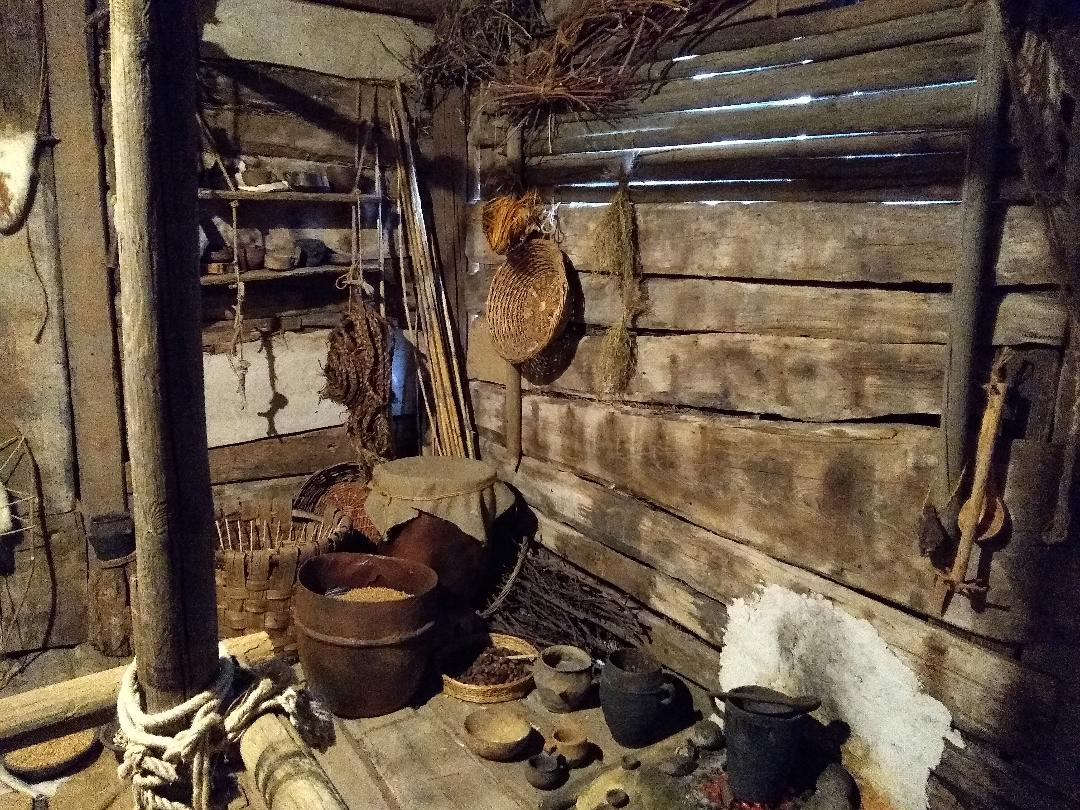While touring the Lake Garda area in northern Italy last month, my wife Nancy and I visited the Museo Rambotti, an archeological museum in Desenzano. This museum features the prehistoric “pile dwellings” (we might call them stilt houses) which were built around Lake Garda and other pre-Alp sites dating from the Neolithic to the Iron Age (spanning the period 5500 – 500 BC). The area has been designated a UNESCO World Heritage Site.
My jaw dropped when I saw the log construction in a replica of a house of the style used around 4000 years ago, during the Bronze Age (pictured above). It wasn’t all that different from the log structures we can still see in the Lovettsville area – the area once known as “the German Settlement.” It got me to thinking, and to looking a few things up.
Log construction of houses was brought to the North American colonies in the 17th and 18th centuries by Scandinavians and Germans, including Swiss-Germans. (The English did not build log cabins and houses when they first came here.) Much of our early architecture in the Lovettsville area came from the Germans and Swiss who originally settled in Pennsylvania and then migrated south through Maryland into the Valley of Virginia. In past issues of this newsletter, we have featured articles on the German two-door house (said by some to have originated in the Tyrol region, a German-speaking area of Austria, now part of Italy), and the Pennsylvania bank barn (also brought to American from German and Swiss parts of Europe).
Just earlier this year, we wrote about Ruse property on the outskirts of Lovettsville (now the Community Park site) which had both a remarkable bank barn which was called a “Switzer,” and a less-remarkable log house whose log structure was exposed when the County prepared to dismantle it. We have lost both of those buildings. Let’s hope we can preserve others which reflect thousands of years of European heritage.
— Ed Spannaus

